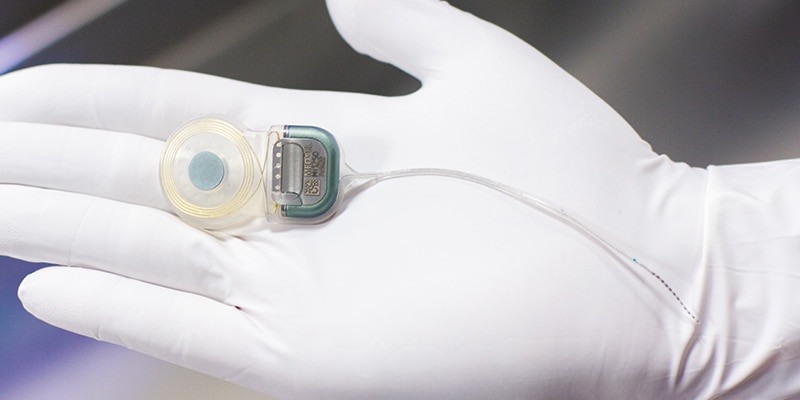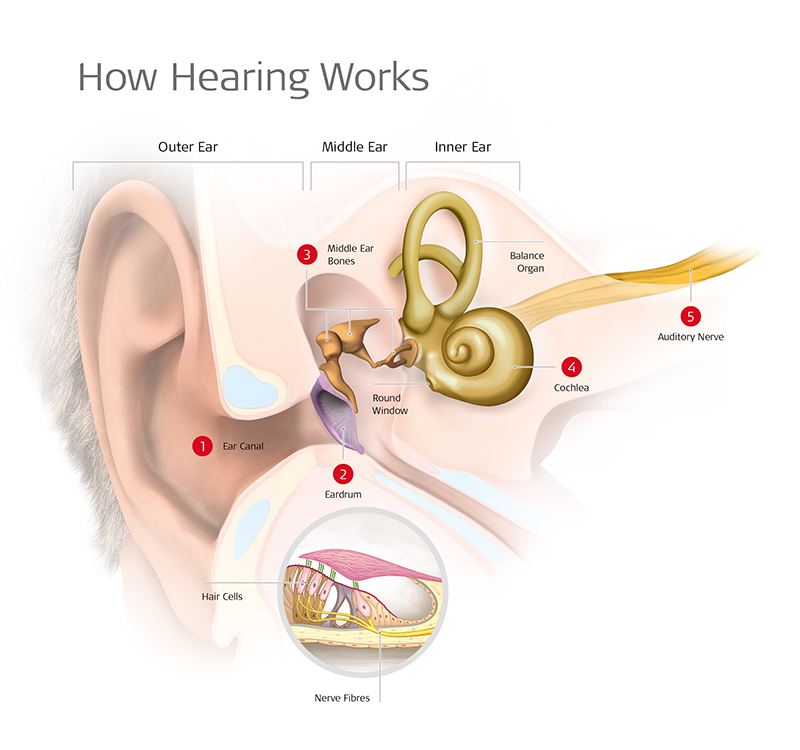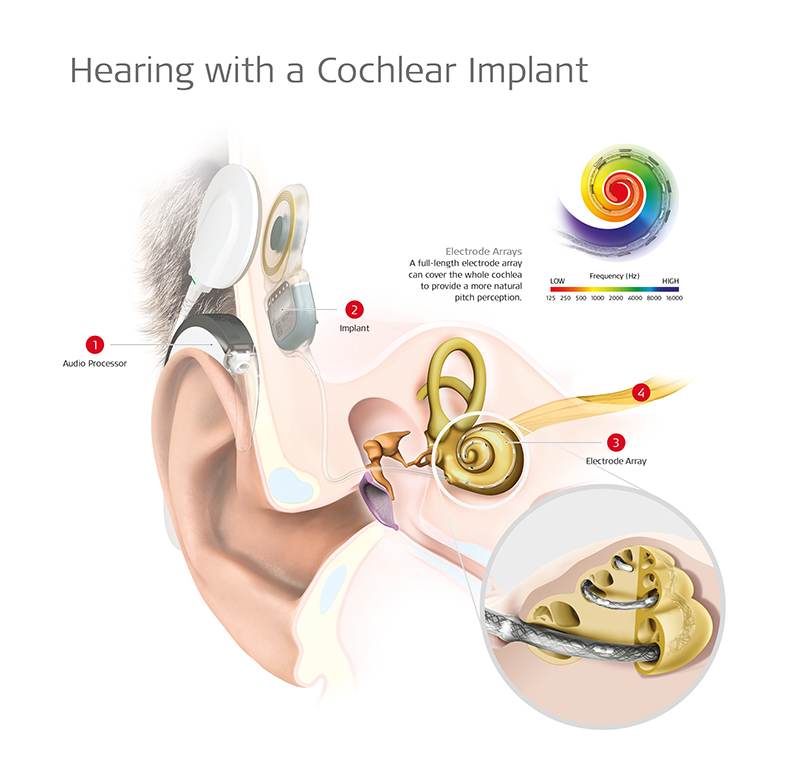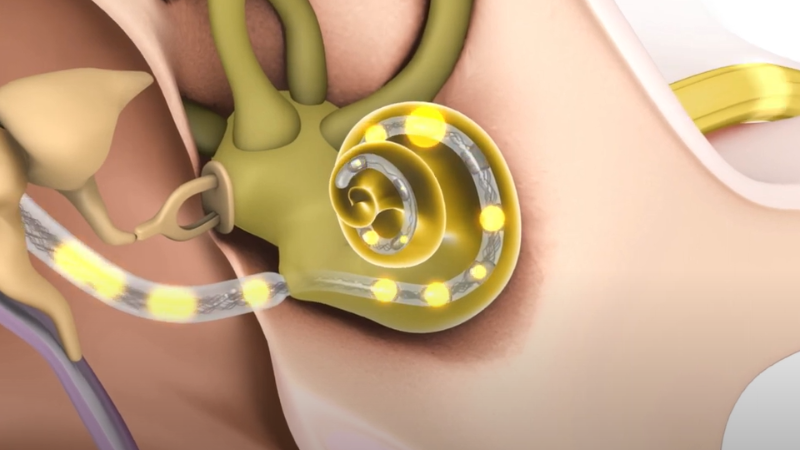
MED-EL
Published Mar 05, 2020
What Is A Cochlear Implant?
A cochlear implant is a type of hearing implant that helps hundreds of thousands of people hear every day. But how exactly do cochlear implants work? Read on to learn the basics of cochlear implants: what they are, how they work, and who can benefit from a cochlear implant.

Cochlear implants are designed for people with severe-to-profound sensorineural hearing loss, which is hearing loss that originates in the inner ear. With this type of hearing loss, hair cells in the part of the inner ear known as the cochlea are damaged or missing.

As a result, someone with damaged or missing hair cells can’t detect sounds properly. This is because functioning hair cells are required to transform sound vibrations into electrical signals that can travel via the auditory nerve to your brain.
When the hair cells are damaged, sound vibrations cannot be converted into electrical signals. Despite the damaged or missing hair cells, a cochlear implant is able to send electrical signals to the brain where they can still be interpreted as sound.
What Is A Cochlear Implant?

A cochlear implant consists of two main parts:
- The first component of a cochlear implant is the internal part, which is implanted behind the ear. A cochlear implant consists of a receiver, magnet, housing, and an electrode array. An electrode array is the bit of technology that sends electrical signals from the implant housing to stimulate the cochlea.
- The second main part is the audio processor, which is external and worn either off the ear (and on the side of the head) or on (and behind) the ear. The audio processor is held in place with magnets.
How Does A Cochlear Implant Work?
A cochlear implant works by replicating the sense of hearing following these steps:
- First, sound waves travel to your ear and the audio processor.
- Second, the external audio processer detects the sound waves and transmits them through the skin to the internal implant as coded electrical signals.
- Third, the internal implant then converts this information into electrical pulses that are sent to the cochlea via the electrode array. The electrode array stimulates specific locations of the cochlea responsible for specific frequencies (or pitches). The apical region of the cochlea is responsible for detecting low-frequency sounds, while the basal region perceives high-frequency sounds.
- In the entire cochlea, these electrical pulses bypass the non-functioning hair cells by directly stimulating the nerve fibers connected to the hair cells.
- Last, the nerve fibers send electrical signals along the auditory nerve to the brain, where the signals are perceived as sound.
Who Can A Hearing Implant Help?
Who a hearing implant can help depends on the type and degree of hearing loss. Cochlear implants can help people who have severe-to-profound sensorineural hearing loss as a result of damaged or missing hair cells in the cochlea in the inner ear. Hair cells can be missing or damaged as a result of genetics, head trauma, exposure to loud noise or other causes. Sensorineural hearing loss is the most common type of hearing loss.
There are, however, other types of hearing loss that cochlear implants cannot help with. A cochlear implant is not appropriate when the outer or middle ear cannot conduct sound properly, known as conductive hearing loss. Cochlear implants also usually cannot assist people who experience both conductive and sensorineural hearing loss at the same time or when the auditory nerve is damaged. Refer to our page on the types of hearing loss for more details.
Remember that it is always best to consult a hearing specialist if you or someone you care for may be experiencing hearing loss.
Cochlear Implants, Aging And Quality Of Life
Sensorineural hearing loss is not only the most common type of hearing loss, it is also a very common part of the aging process. In fact, according to the World Health Organization, approximately one-third of people over the age of 65 are affected by disabling hearing loss worldwide. Many people, regardless of age, with severe-to-profound hearing loss on one side can see significant improvements in their health-related quality of life after 3 months of using a cochlear implant.
Getting a cochlear implant is a big decision. Since a hearing implant will stay with you or the one you care about for many years, it’s important to consider the impact the hearing implant you choose will have, both now and in the future. Audio processors, on the other hand, can easily be upgraded with the latest technology.
For more information about hearing tests, cochlear implants and audio processors, contact your local MED-EL representative.
References

MED-EL
Was this article helpful?
Thanks for your feedback.
Sign up for newsletter below for more.
Thanks for your feedback.
Please leave your message below.
Thanks for your message. We will reply as soon as possible.
Send us a message
Field is required
John Doe
Field is required
name@mail.com
Field is required
What do you think?
© MED-EL Medical Electronics. All rights reserved. The content on this website is for general informational purposes only and should not be taken as medical advice. Contact your doctor or hearing specialist to learn what type of hearing solution suits your specific needs. Not all products, features, or indications are approved in all countries.

MED-EL

MED-EL
.png)



